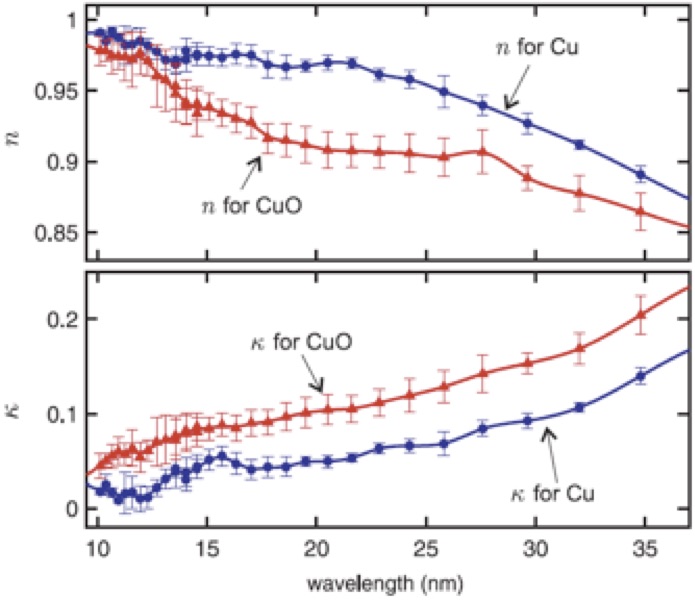Controlling High Harmonic generation with Counter-Propagating Light
We pioneered the use of weak counter-propagating light to control and probe the regions in an intense laser focus that produce laser-generated high harmonics. This work included the first demonstration of all optical quasi phase matching. We did much of our work in a semi-infinite gas-cell configuration, where the gas medium extends from a focusing optic to an exit foil near the focus.


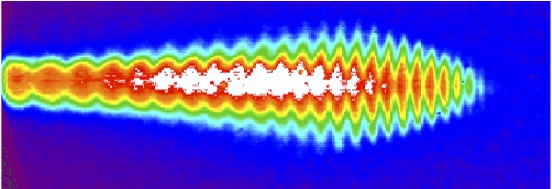
When a counter-propagating light pulse interacts with the generating beam, the harmonic emission is suppressed. By turning off harmonics generated in out-of-phase zones of the generating focus, it is possible to produce an overall improvement of the output signal. The figure below shows harmonics generated in neon as the delay of a single relatively long counter-propagating laser pulse is varied. One can see harmonic enhancement when poor phase matching conditions are improved by thequasi phase matching, and one can also see harmonic suppression when the phase matching is already good. We were able to prove that optimal phase matching in a gas cell can reach the reabsorption limit.
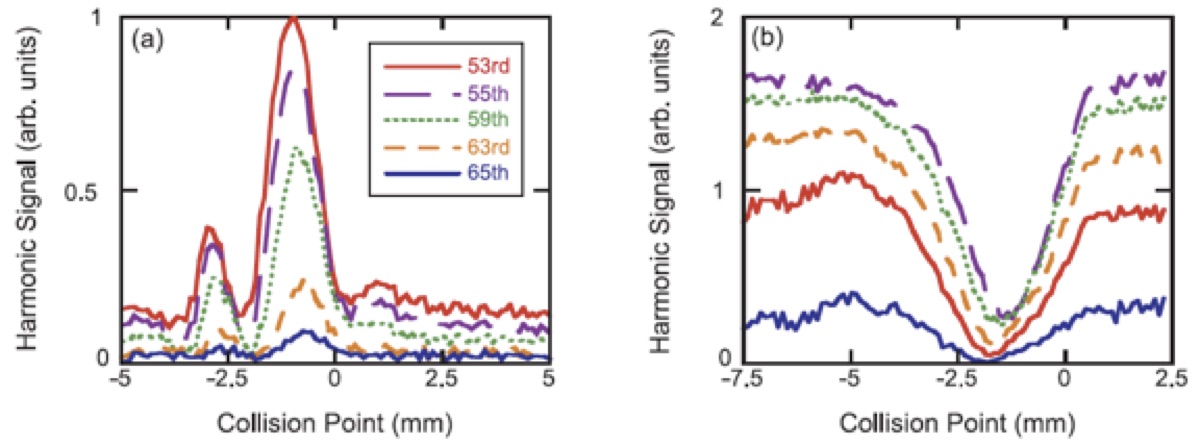
Movies
- Effect of Weak Counter-Propagating Field
- Harmonic Generation in a Semi Infinite Helium Cell
- Harmonic Generation in a Semi Infinite Neon Cell
Extreme Ultraviolet Polarimetry
We constructed a polarimeter that employs laser-generated high-order harmonics as a source of polarized extreme ultraviolet light, wavelength range 10 nm to 60 nm. The instrument incorporated extensive automation for angle scanning, sample insertion, and alignment control. We could separately measure s- and p-polarized reflectances, from which the optical constants of sample materials could be determined.
We greatly improved the reliability of our polarimetry data by measuring the ratio of p-polarized to s-polarized reflectance rather than the absolute reflectance for each polarization. This technique had not been previously used in the extreme ultraviolet wavelength range, because of the lack of a source with easily rotatable polarization.
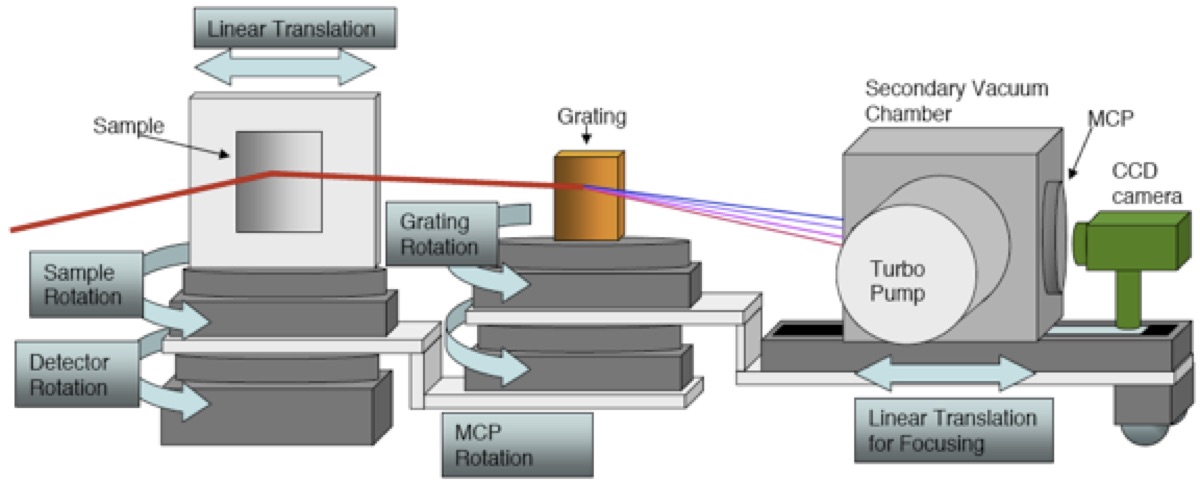
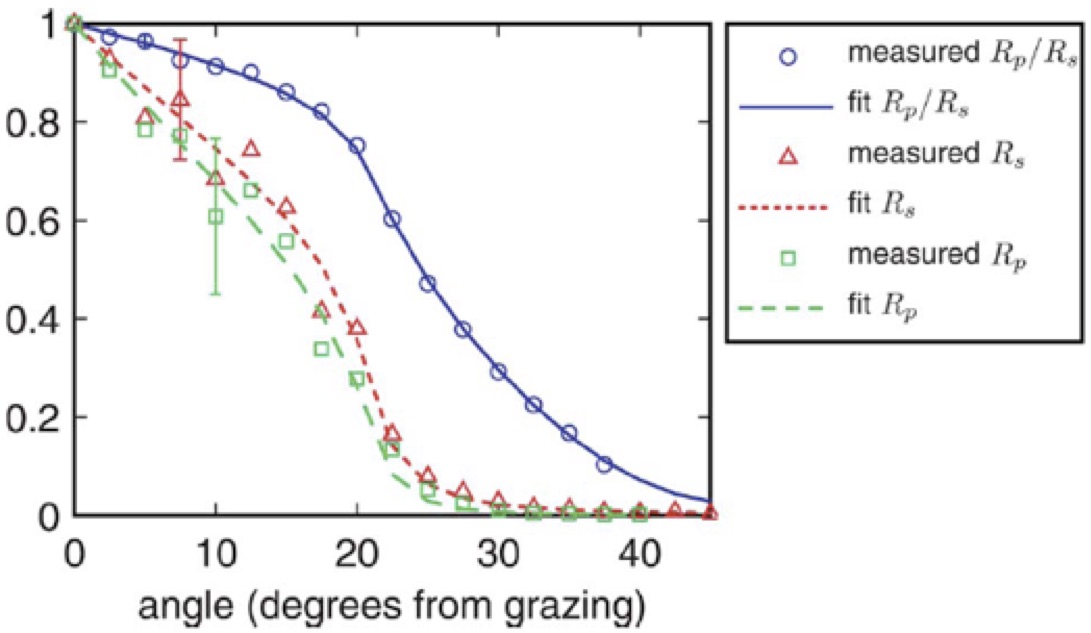
We demonstrated the feasibility of this high-harmonic ‘workhorse’ application as we characterized the optical constants of copper and uraniumin in the extreme ultraviolet. These measurements were performed in situ with thin-film deposition to avoid oxidation. We resolved discrepancies in the literature regarding the measured values for both materials. Prior work on the absorption of copper had inadvertently measured copper oxide.
